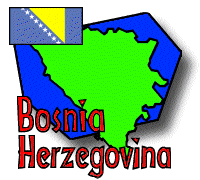Place of the Day: Mladi Most
- ASF-Mladi Most
- 55 dr. Mile Budaka
- 88000 Mostar (via Split)
- Bosnia-Herzegovina
- Email: mladimost@geocities.com and mladi-most-mo@zamir-zg.ztn.apc.org
- 55 dr. Mile Budaka
Tech Fact of the Day: shrapnel and "sidewalk roses"
Group Dispatch, April 17

Questions? Ask Anthony ![]() !
!
Return to Fast Facts
 |
 |
 |
 |
 |
|
Itinerary/ Journal |
Discussions |
About Bosnia |
eDscape Projects |
Scrapbook |
|
|
|
|
|
Copyright 1997-99 BikeAbout. All rights reserved.
